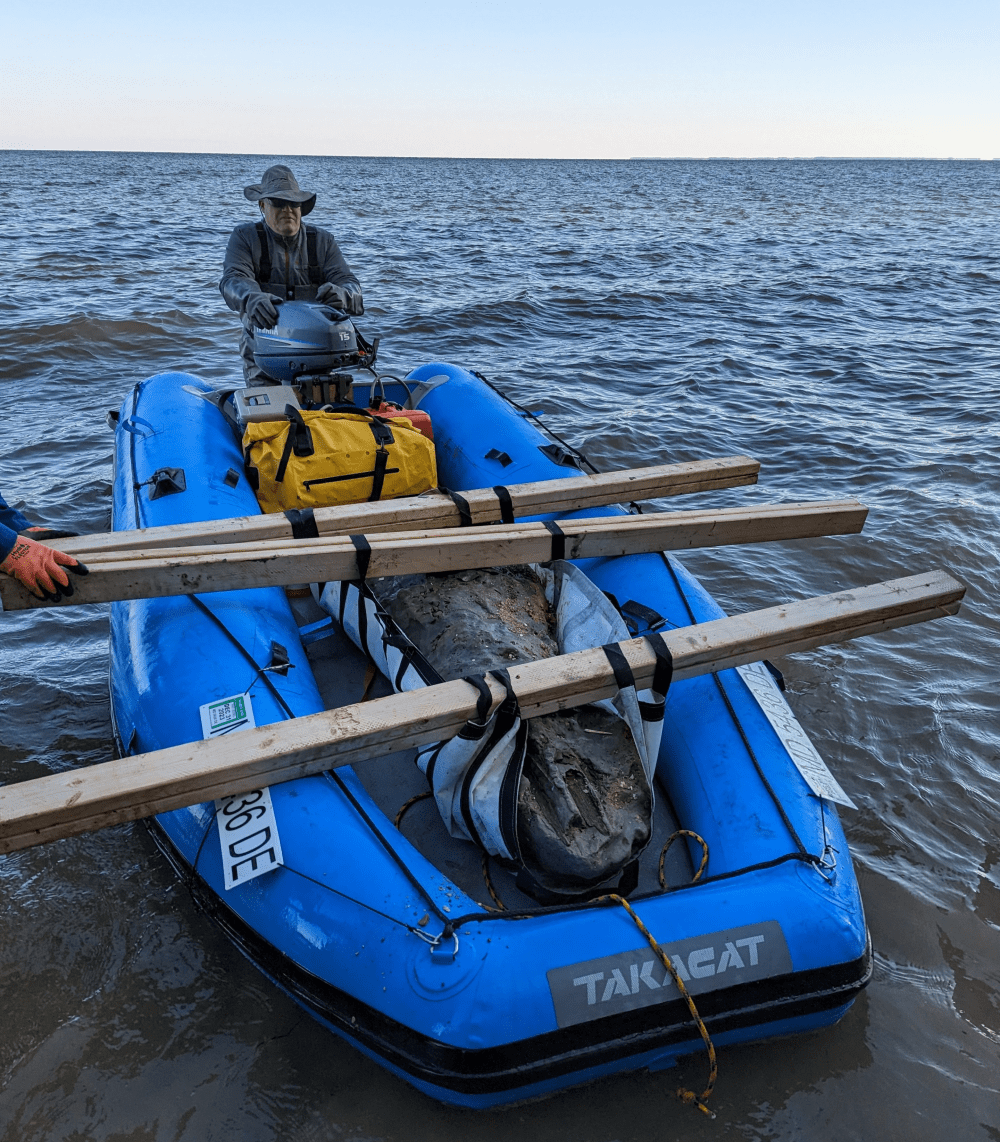Fossil hunter Cody Goddard thought he’d reached the beachcombing peak when he found a whale vertebra last February. That was, until he blew the proverbial bucket list to smithereens by discovering the enormous skull of an ancient baleen whale, one of the most complete specimens of its kind ever found in the region.
What’s perhaps most incredible of all about the discovery is how easy it would’ve been to miss.
“I found a very small shard of thin bone in the clay, but decided it wasn’t worth extracting because it was so small and delicate and passed it by,” Goddard told IFLScience. “After searching some more further down the beach and not finding anything exciting, on my way back I decided I should explore the area around the small shard a bit more thoroughly, looking in every crevice and at the underside of the clay boulders on the shore.”
A good thing, too, as after some painstaking scraping and the removal of one boulder later, Goddard realized he was looking at a large mammal skull. The massive fossil was similar to that of deer he had seen in the past, and combined with the knowledge he’d picked up at museums and exhibitions, the prospect of a whale’s skull sprung to mind.
Curator of Palaeontology at the Calvert Marine Museum Dr Stephen Godfrey received an email about the discovery and soon a team went down to try and retrieve the fossil, which was a hell of a lot easier said than done.

The team considered helicopters and a barge, but in the end the combined muscle power of a crew of fossil enthusiasts got the job done. Image courtesy of Cody Goddard
“The greatest difficulty was the location and weight of the skull,” Godfrey told IFLScience. “We attempted to have the skull air-lifted (helicopter) or by barge, but in the end, in spite of the weight of the skull, we opted to just lift it with a crew of fossil enthusiasts!”
Investigation into the enormous skull revealed it to be around 12 million years old, and one of the most complete ancient baleen whale skulls ever collected from this section of Calvert Cliffs. What comes next is the painstaking process of freeing the skull from its tomb of sediment, something Godfrey says is being done with the aid of two museum volunteers armed with miniature jackhammers called air-scribes.
“Once the sediments have been removed, we will be able to identify what kind of extinct whale this is, or whether it represents a species new to science,” Godfrey continued. “We are also interested to try to learn why the usually soft sediments along Calvert Cliffs were so cemented around this skull, and Dr Geoff Bowers (St. Mary’s College) has taken a hardened sediment sample to try to figure that out.”
The rare easter egg still holds much promise, then, and must qualify as one of the greatest accidental finds following a day of combing for fossil sharks’ teeth.
“I was amazed I found it laying on the beach,” said Goddard. “Pretty much all of the skulls found in the cliffs are found when they are still embedded in the cliff faces – they have to be quarried out. This skull is inside a rock concretion and looked like any other boulder on the beach. I am very excited to see what is inside!”
What’s the coolest thing you’ve ever found on the beach?
Source Link: Fossil Hunter Unearths Enormous 12 Million-Year-Old Whale Skull